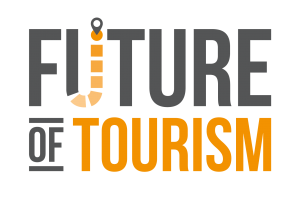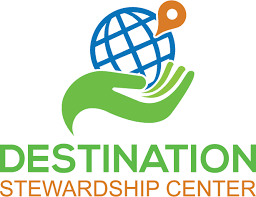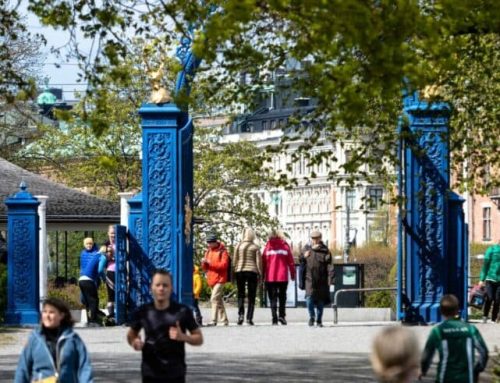Destination Stewardship Report – Spring 2021 (Volume 1, Issue 4)
This post is from the Destination Stewardship Report (Spring 2021, Volume 1, Issue 4), an e-quarterly publication that provides practical information and insights useful to anyone whose work or interests involve improving destination stewardship in a post-pandemic world.
Reset Tourism Webinar Series – Destination Stewardship
“Good for us, better for all.” —St. Kitts sustainable tourism slogan
Held on 25 March 2021, the first webinar of the Future of Tourism Coalition‘s four-part “Reset Tourism” series drew 500 registrants. These webinars are intended to help destinations emerge from the Covid crisis with new forms of governance and collaboration that will enable a more holistic and sustainable approach to tourism management and development. That includes the skills, resources, and levers for change needed not only to develop resiliency, but to bolster community wellbeing and each destination’s unique intrinsic appeal.
The Coalition team here presents highlights from the first Webinar, led by two of the six Coalition founding members, the Destination Stewardship Center (DSC) and the Center for Responsible Travel (CREST):
Destination Stewardship and Stakeholder Engagement

To discuss real-world approaches for doing just that, a moderated panel hosted representatives from three different types of destinations – St. Kitts, Caribbean; Göteborg, Sweden, and the Columbia Gorge, USA.
Key Takeaways from the webinar:
- Recognize that tourism is not like other industries; it depends on the destination – a place where people live.
- That reality requires broadening standard ways of measuring tourism success.
- Success means adding protection and enhancement of destination quality to economic benefits, preferably focused on the destination community.
- If we see the destination as tourism’s holistic “product”, then it requires a holistic management approach.
- To acheive that, local public, private, and civil society sectors can collaborate to build a tripartite destination stewardship council or equivalent.
- Take steps to make it happen: Activate, collect data, mobilize, implement.
Make it work by building strong relationships with frequent communication.
Resources:
View PowerPoint slides by
Watch webinar recording (2 hours)
Here are the webinar high points in more detail. After Samantha Bray of CREST made an introduction to the webinar series, Jonathan Tourtellot of the Destination Stewardship Center gave a keynote presentation that included these elements:
Reframing Tourism – and Why
- There are two faces of tourism – destructive and constructive. We need to maximize the better side as pandemic recovery begins.
- First, reframe tourism perceptions, as per the Coalition’s first Guiding Principle, “See the whole picture.”
- Styles of tourism depend on character of place differently: experiential touring depends on human and physical character of place, rest and recreation needs only physical character, and entertainment-style (manufactured attractions) need no relation at all to identity of place. The first two depend on a destination’s intrinsic character, which is a limited resource. Unlike manufactured attractions, we can’t build more destinations.
- Most tourism thus is unlike other industries in that its ultimate “product” is the place; tourism businesses facilitate the tourist experience with the place.
- Second, reframe tourism success: Governments often see tourism as little more than the sum of business transactions, a flawed perspective that ignores other important factors. A perception gap persists whereby the tourism industry is seen as unrelated to the work of destination stewards in matters of culture, preservation, environment, and community well-being.
- To gauge success, measure what counts, not just what’s easy to count. Totaling tourist arrivals and transactions ignores critical “externalities” – social, aesthetic, natural, spiritual, historic, and other facets of the destination. What’s more, caring for those things can pay off by attracting responsible tourists.
- Aim for value over volume: Revenue per tourist trumps number of tourists; revenue distribution through the community trumps total revenue; overall enhancement of community well-being trumps revenue alone.
- For destination resilience, diversify the economy and tourism markets, and build capability to cope with long-term issues such as climate change and the next pandemic.
- Third, structure holistic management. A holistic product requires a holistic approach. With tourism, that has not generally been the case. “No one’s in charge” is a common citizen complaint.
- One model for fixing this is creation of a destination stewardship council or equivalent – a collaboration among public, private and civil society groups. The involvement of the community is key to success.
- Based on National Geographic experience, a tripartite destination stewardship council, with roughly equal weight to those three sectors, offers stability to survive changes in government, irresponsible development, and other disruptions.
Tourtellot’s closing warning: Without deliberate action to restructure management, destinations will likely default to the flawed, pre-Covid way of doing things.

Phases of Development – A Roadmap for Stewardship Councils
CREST and the DSC have studied successful stewardship initiatives and have field-tested a model approach based on their research. These four phases should be seen as a guideline to develop the stewardship council, a roadmap where destinations can choose their own route. There is not a set path that fits all.
Activation: Recognize the need; identify strategic timing (such as resident discontent or Covid recovery); form a planning group, and consider a stewardship council model. This process requires a committed leader or leadership team and a supporting group of key stakeholders.
Collect data from stakeholders, including residents and tourists (it is important to ask the right questions) and ultimately hold visioning sessions that include under-represented communities. Such data collection should become a continual cyclical process to inform planning, followed by implementation.
Mobilization: Form a destination stewardship council comprising public, private, and civil society sectors; create a consensus mission statement and vision; define metrics of success that move beyond visitor numbers and total revenue; develop shared goals, objectives, and strategy; then plan the activities.
Implementation: Hold a catalytic event to engage broad interest; establish a council or network structure; make a business plan to keep the council going; raise funds; begin executing activities.
For more information, visit CREST’s blog post on building a destination stewardship council.
Panel Discussion Highlights
Three representatives selected for their exemplary collaborative approach to destination stewardship spoke at a moderated panel:
Representing a regional destination: Emily Reed, Network Director, Columbia Gorge Tourism Alliance, Oregon-Washington, USA
Management model: Partnership-based. Similar to the recommended tripartite model; enables transborder cooperation between states.
Funding: Member organizations chip in for staff.
Notable strategy: Various projects combat overtourism by spreading visitors geographically and seasonally.
Representing a tourism-dependent small island: Diannille Taylor-Williams, Assistant Permanent Secretary, Ministry of Tourism, St. Kitts–Nevis, Caribbean
Management model: Sustainable council made of public, private, and civil society sectors.
Funding: Tourism Ministry.
Notable strategy: Provide sustainability training for existing and likely government staff, thus injecting sustainability expertise into government decision making. Ensure that the council is a strategic partner on different initiatives to spread the concept of sustainability among different industries and stakeholders.
Representing a historic city: Katarina Thorstensson, Head of Sustainability & Smart Tourism Strategist, Göteborg & Co, Sweden.
Management model: Traditional DMO that has expanded its role to help develop the city as a sustainable destination.
Funding: Taxes and private support.
Notable context: Citizenry and politicians share a sustainability vision. “We have a good relationship with the politicians on our board. Opposition and incumbents are unified in believing that tourism is a key industry for the city.”
Common themes emerging from the panel discussion and question-and-answer session:
- Building strong relationships among destination stakeholders is essential. It builds long-term trust.
- So does sharing a common vision.
- Hold regular meetings; communicate what everybody is doing to enhance collaboration.
- Think about the destination first, as per St. Kitts’s slogan, “Good for us, better for all”
- Collaborate on ways to spread out tourism impacts, positive or negative.
- When conflict arises, sit down and have conversations in order to move toward finding solutions.
Panelists considered those points good advice for destinations anywhere.
To continue to dive in to these topics, make sure to sign up for the free quarterly Destination Stewardship Report – a joint project of the Destination Stewardship Center and the Global Sustainable Tourism Council.
About DSR Contributors
Volunteer contributors are welcome to the Destination Stewardship Report. Contact us with your proposals and ideas.





